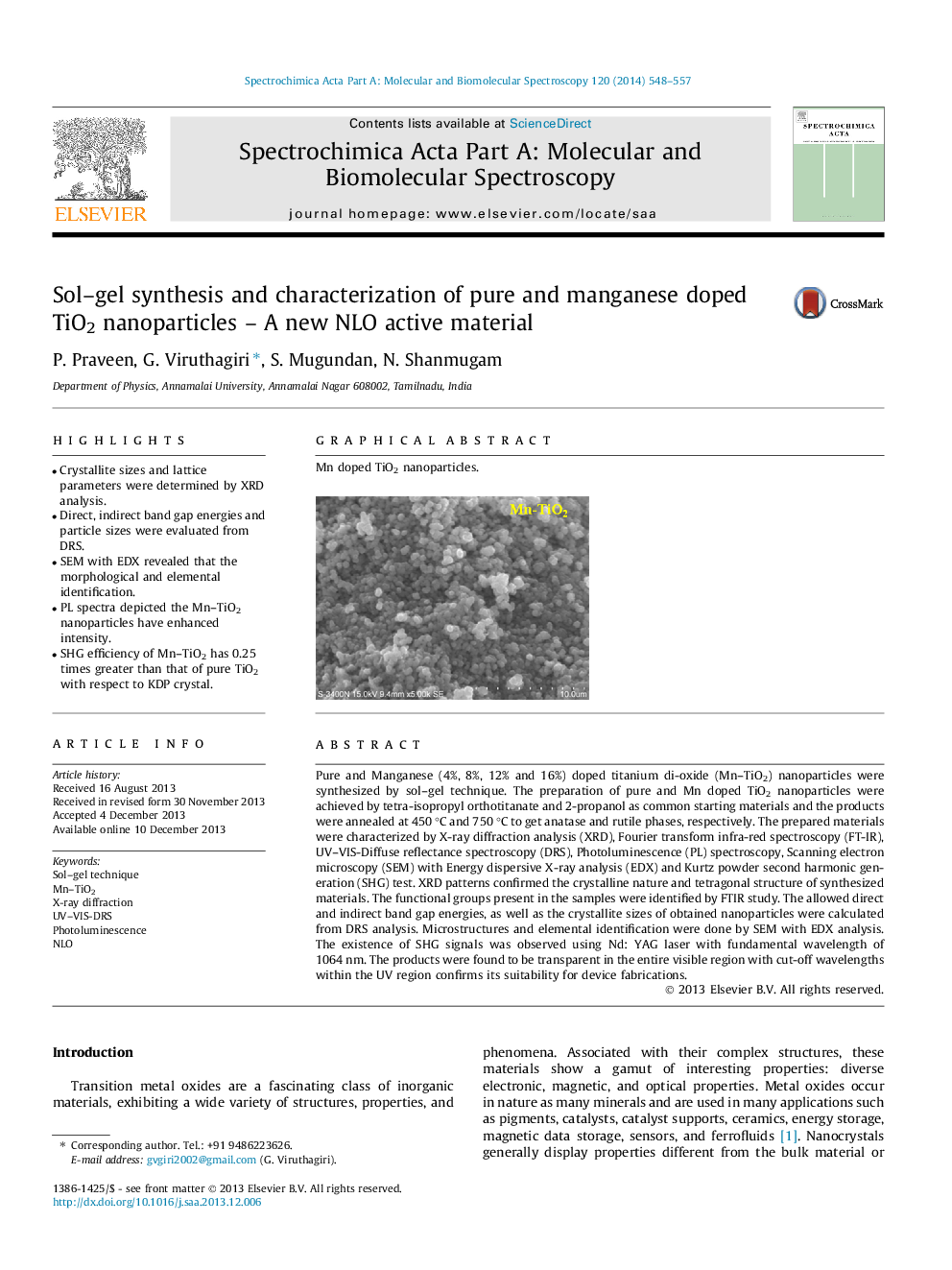| Article ID | Journal | Published Year | Pages | File Type |
|---|---|---|---|---|
| 1230886 | Spectrochimica Acta Part A: Molecular and Biomolecular Spectroscopy | 2014 | 10 Pages |
•Crystallite sizes and lattice parameters were determined by XRD analysis.•Direct, indirect band gap energies and particle sizes were evaluated from DRS.•SEM with EDX revealed that the morphological and elemental identification.•PL spectra depicted the Mn–TiO2 nanoparticles have enhanced intensity.•SHG efficiency of Mn–TiO2 has 0.25 times greater than that of pure TiO2 with respect to KDP crystal.
Pure and Manganese (4%, 8%, 12% and 16%) doped titanium di-oxide (Mn–TiO2) nanoparticles were synthesized by sol–gel technique. The preparation of pure and Mn doped TiO2 nanoparticles were achieved by tetra-isopropyl orthotitanate and 2-propanol as common starting materials and the products were annealed at 450 °C and 750 °C to get anatase and rutile phases, respectively. The prepared materials were characterized by X-ray diffraction analysis (XRD), Fourier transform infra-red spectroscopy (FT-IR), UV–VIS-Diffuse reflectance spectroscopy (DRS), Photoluminescence (PL) spectroscopy, Scanning electron microscopy (SEM) with Energy dispersive X-ray analysis (EDX) and Kurtz powder second harmonic generation (SHG) test. XRD patterns confirmed the crystalline nature and tetragonal structure of synthesized materials. The functional groups present in the samples were identified by FTIR study. The allowed direct and indirect band gap energies, as well as the crystallite sizes of obtained nanoparticles were calculated from DRS analysis. Microstructures and elemental identification were done by SEM with EDX analysis. The existence of SHG signals was observed using Nd: YAG laser with fundamental wavelength of 1064 nm. The products were found to be transparent in the entire visible region with cut-off wavelengths within the UV region confirms its suitability for device fabrications.
Graphical abstractMn doped TiO2 nanoparticles.Figure optionsDownload full-size imageDownload as PowerPoint slide
